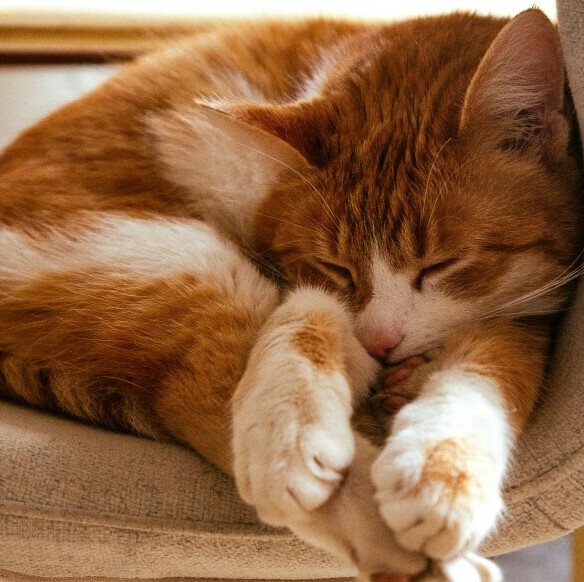Hey, it’s Bob here with a topic that hits close to home. A year and a half ago, my Kitty just showed up. Not having had a cat, I had to learn on-the-fly about my new little buddy. After extensive research, I can share some very helpful tips with you.
Understanding a cat’s behavior is crucial for providing appropriate care and ensuring a harmonious relationship between humans and felines. So, I’m going to walk you through essential elements of cat body language you should keep an eye out for.
When it comes to tail positioning, it’s like a mood barometer. A high, confident tail means your cat is content. A tucked tail? They could be scared or uncomfortable. Watch their tail – it’s a real-time status update!
Now, let’s talk about those ears. Cats have incredible hearing and use their ears to express emotions. Ears forward? They’re alert or happy. Ears flat? You might want to give them some space as this could signal irritation or aggression.
Those fascinating cat eyes offer clues, too. Slow blinks can be a cat’s way of saying ‘I trust you,’ while wide, dilated pupils might mean excitement or fear. It’s a delicate dance of context clues that you’ll get better at reading over time.

And the purring? It can mean contentment, sure, but cats also purr when they’re in pain or anxious – it’s their comfort mechanism. You’ll need to consider the situation. If they’re curled up on your lap, chances are they’re just happy to be there.
Vocalizations like meowing vary from one cat to another. Some are chatty; others are quiet. But whether it’s a soft ‘hello’ meow or a loud, persistent call, they’re trying to tell you something, from ‘feed me’ to ‘I need attention.’
Lastly, play behavior is not to be overlooked. It’s not just fun and games; it’s integral for their well-being. Encourage stalking and pouncing with toys to mimic prey – it’s a fantastic way to bond and keep your cat physically fit and mentally sharp.
Gaining these insights is just the beginning. You’ll not only improve your care but also deepen the bond between you and your cat. Remember, every cat is unique, so while these tips are a good starting point, you can always fine-tune your approach as you learn more about your fur-covered companion.
Living in Harmony: Insights into Feline Behavior
I really hope that you’ve found the tips on cat body language insightful. But understanding your cat doesn’t stop there. Now, let’s round up what we’ve learned with some deeper insights into their social behavior, territorial instincts, and more.
Cats can actually be pretty social, contrary to popular belief. They may not always run up to you wagging their tail, but they show affection in their way, like when they headbutt you, that’s a clear sign they trust and care for you. It’s important to recognize these subtle signals to fully appreciate the companionship your cat offers.
Now what about their love for territory? Cats have a strong sense of ownership over their space. They may rub against furniture or scratch to mark their area. This behavior is totally normal, so don’t stress over it. In fact, provide your cat with scratch posts and their cozy corner to reassure them that they’re home.
I’ve also noted that play isn’t just a pastime for cats – it’s a necessity. Channeling their predatory instincts through play keeps them mentally and physically sharp. So grab a toy and spend some quality time together; it’s a great way to strengthen your bond.
When it comes to sleep, cats could easily win gold in the snooze Olympics. They need those Z’s to stay alert and healthy. Create a quiet, comfortable spot for them to retreat to, and you’ll see a happier, more relaxed kitty.

Aggression and fear in cats is a touchy subject. Sometimes, all the love in the world might not calm a frightened cat, and that’s no one’s fault. It’s about creating a supportive environment that makes them feel safe and secure. Little changes, like a consistent routine and minimizing loud noises, can have a big impact.
And, dealing with kitty litter troubles can be trying. It’s often a sign that something’s not quite right. Whether it’s the litter type, box location, or a health issue, being attentive can solve many problems before they get out of hand.
Lastly, as cats age, they’ll change, just like us. They may become mellower or need more nap time. Observing these changes and adjusting their environment to suit their aging needs will help them continue to thrive.
So, if you’re like me and have found yourself in the company of a cat, remember that patience and understanding go a long way. Each quirk and quiet moment is part of the journey of companionship with your feline friend. Choose something that resonates with both of you, and treasure those moments of silent communication. Cats are extraordinary creatures, and getting to know them is one of life’s unexpected pleasures.
Thanks for spending time with me. If you want to keep learning about feline friends and how to live in harmony with them, I’m just a click away. And I’d love to hear your feedback or stories about your own experiences with reading cat body language – leave your comments and let’s chat.
